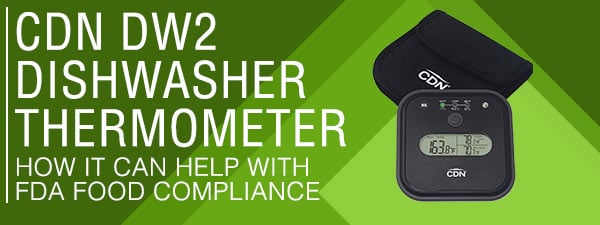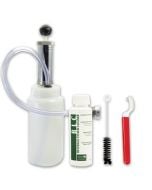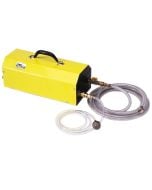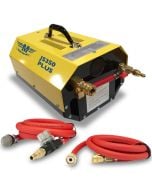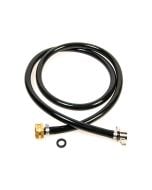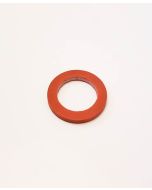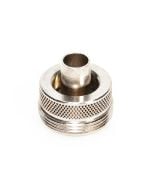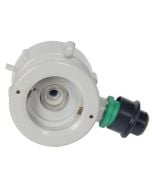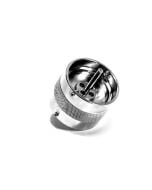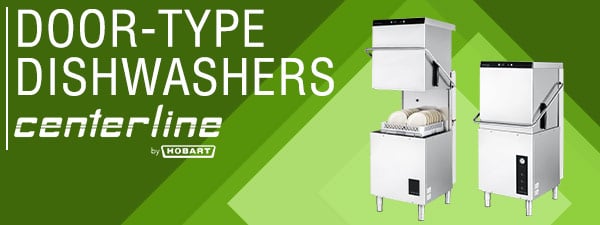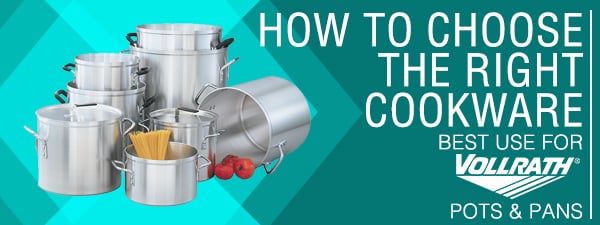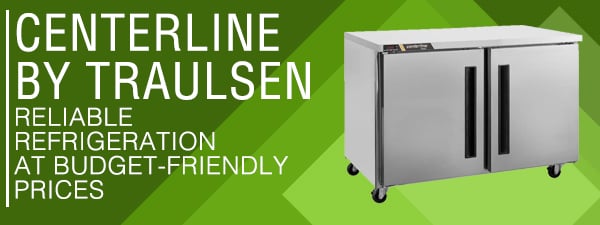Choosing the Right Beer Line Cleaning Equipment for your Beer Dispensing System
- Apr 22, 2020
- 0 Comments

If you don't regularly clean your beer lines, it's pretty much a guarantee that you have a buildup of yeast, mold, beer stone, and other impurities just flourishing in your beer dispensing system. Not only does this mean you and your customers could be drinking mold or yeast with every sip, but it's likely that these accumulations are also negatively affecting the taste of your beer.
Luckily, all you need to do to flush away these pesky, beer-ruining contaminants is to make beer line cleaning a part of your normal maintenance routine. The type of equipment needed and the frequency of the cleanings depends on the type of beer dispensing system you have.
To make sure you get off on the right foot, we're providing equipment and cleaning frequency recommendations for the most common dispensing systems below.

Jockey Boxes
Jockey boxes need to be cleaned between every use. If you skip a cleaning, the previous beer can taint the taste of your current beer. Just imagine your full-bodied English ale including notes of a sweet, nutty malt. Probably not very appealing.
To start, you will need a flush out hose to clean the existing beer out of your system. It's FDA-approved and makes it easy to flush out both cold plate and coil cooler lines.
To properly clean a jockey box that dispenses one product or has a coil less than or equal to 50’, you will need our heavy-duty cleaning kit.
This kit creates the pressure needed to push your beer line cleaning solution through your cooler. It includes a jar pump assembly, a gasket for coupling nut attachment, 4 ounces of BLC cleaning solution concentrate, a faucet brush, and a spanner wrench.
For larger jockey boxes, a pressurized beer line cleaning bottle and Sankey cap are recommended.
Keep in mind you may have to increase the frequency of your cleanings in the summer months, as warmer weather can accelerate the growth of impurities like yeast and mold.
If you need further information about how to clean your jockey box, we've created a cleaning tips sheet.

Kegerators/Beer Dispensers
If you have a single tap kegerator in a bar setting, you should be cleaning it once a month. If you have a home refrigeration conversion system, you should be cleaning either between kegs or once a month, whichever comes sooner.
Both of these systems can be cleaned using either our economy or our heavy-duty cleaning kit. The difference between the two? The heavy-duty kit has a more rigid lid that can create a tighter seal, allowing it to create more pressure. This makes it more effective over longer lengths of beer line. The economy kit best-suited for simple kegerators and home conversion refrigerators.
Both kits include a cleaning jar, a positive-sealing washer, 4 ounces of BLC cleaning solution concentrate, a faucet brush, and a faucet wrench.
We've put together detailed instructions on exactly how to clean your kegerator beer system if you need it.

Air-Cooled Long Draw Dispensing System
An air-cooled long draw draft beer system has less than 25 feet of beer line and uses (you guessed it) chilled air to maintain the temperature of your beer from the walk-in to the faucet.
Since this system has quite a bit more beer line than jockey boxes or kegerators, you will need an electric pump system or a cleaning can to effectively clean it.
The Maxi-Vac electric beer line cleaning system is easy-to-use - all you have to do is place one end of the pump into a bucket of beer line cleaner, then attach the other end to your dispensing system. It will circulate the cleaner through your system, getting rid of all of the impurities in the process. This pump works best on short-run systems that are 10 to 15 feet long and have 2-3 lines.
To use the 2.4 gallon cleaning can, you fill it with cleaning solution, tap it like you would a keg, and the cleaner will be pushed through your system. Because it has two American Sankey D-system heads, you can clean two lines at once!
Long draw systems should be cleaned at least once every two weeks. If you move a large volume of beer, once a week is recommended.

Glycol-Cooled Long Draw Dispensing System
Glycol-cooled systems generally have more than 25 feet of beer line, which means you need to use an electric cleaning pump that's been specifically designed to work with longer-run draft beer lines. The Maxi-Vac heavy duty cleaning pump fits the bill perfectly - it can clean up to 1600 feet of line in one pass! It has a direct-drive, positive displacement pump that ensures a constant flow of cleaner, and the internal bypass features allows you maximum volume control.
Another option that's effective for longer lengths of beer line is a beer line cleaning can. We offer two versions of our 4.8 gallon beer line cleaning can - one with four American Sankey D-system heads and one with two American Sankey D-system heads and two European Sankey heads. Both options allow you to clean four lines at once.
Like the air-cooled system, glycol systems should be cleaned at least once every two weeks, or once every week if you are have a high-volume operation.
Accessories
While the equipment above will take care of the basics, you may need additional accessories to streamline the process:
- A Sankey coupler check ball lifter eliminates the need for you to remove the ball retainer and ball from your keg coupler while you are cleaning out your system.
- A faucet cleaning adaptor/coupler allows you to clean your system from the faucet through the keg coupler. It also prevents your cleaning solution from entering the CO2 line, which effectively eliminates beer contamination when retapping. It also raises the check ball, so cleaning solution can travel in either direction.
- A beer line cleaning cup goes on each keg that is in a series for an easy coupler connection.
- A faucet cleaning attachment (and washer) makes it easy to flush your beer lines - you just remove the faucet and screw this attachment on!





